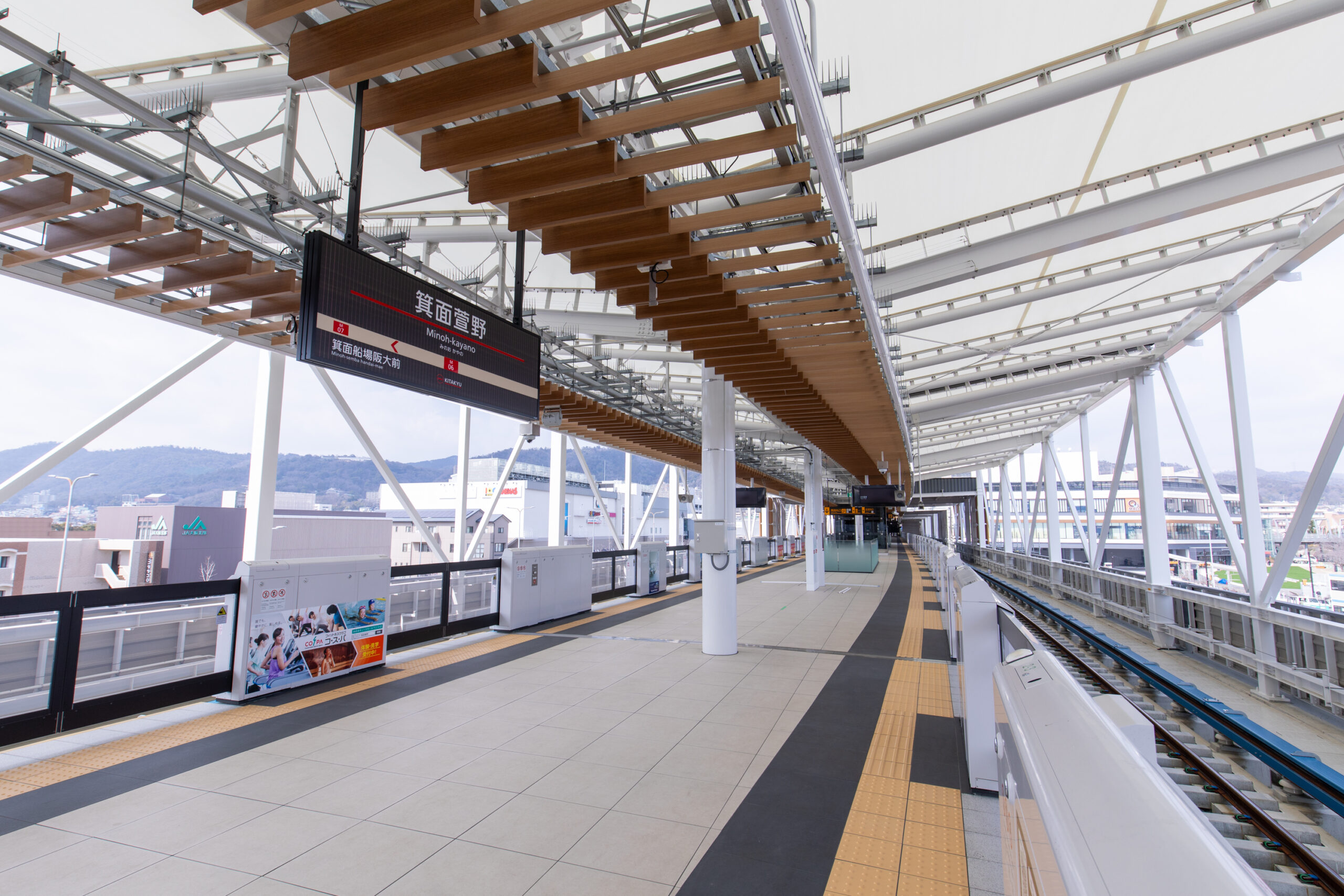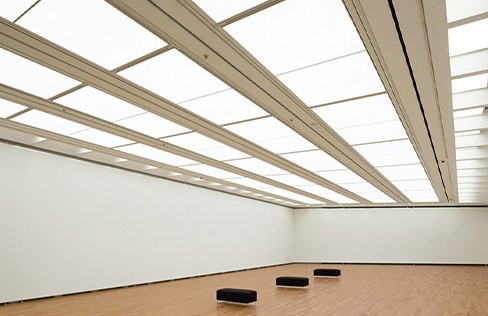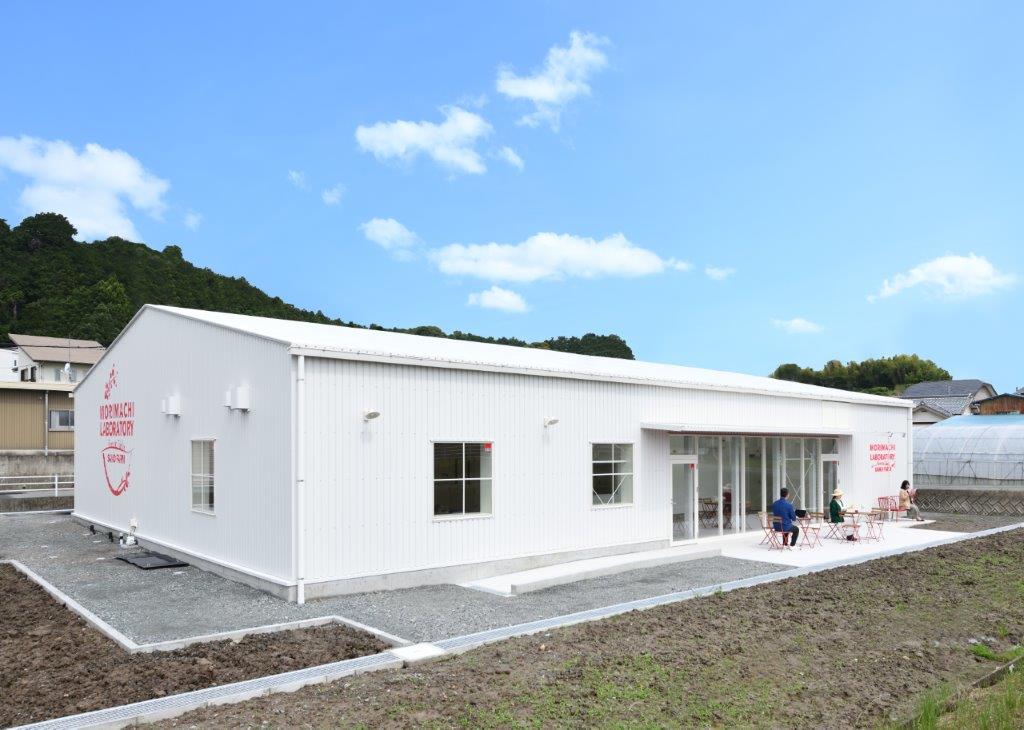

Taiyo Kogyo Column
Received the prime contract for the new Tambayama Village Hall, creating a new history with the locals by overcoming mountain passes and huge stone.
2024.03.13
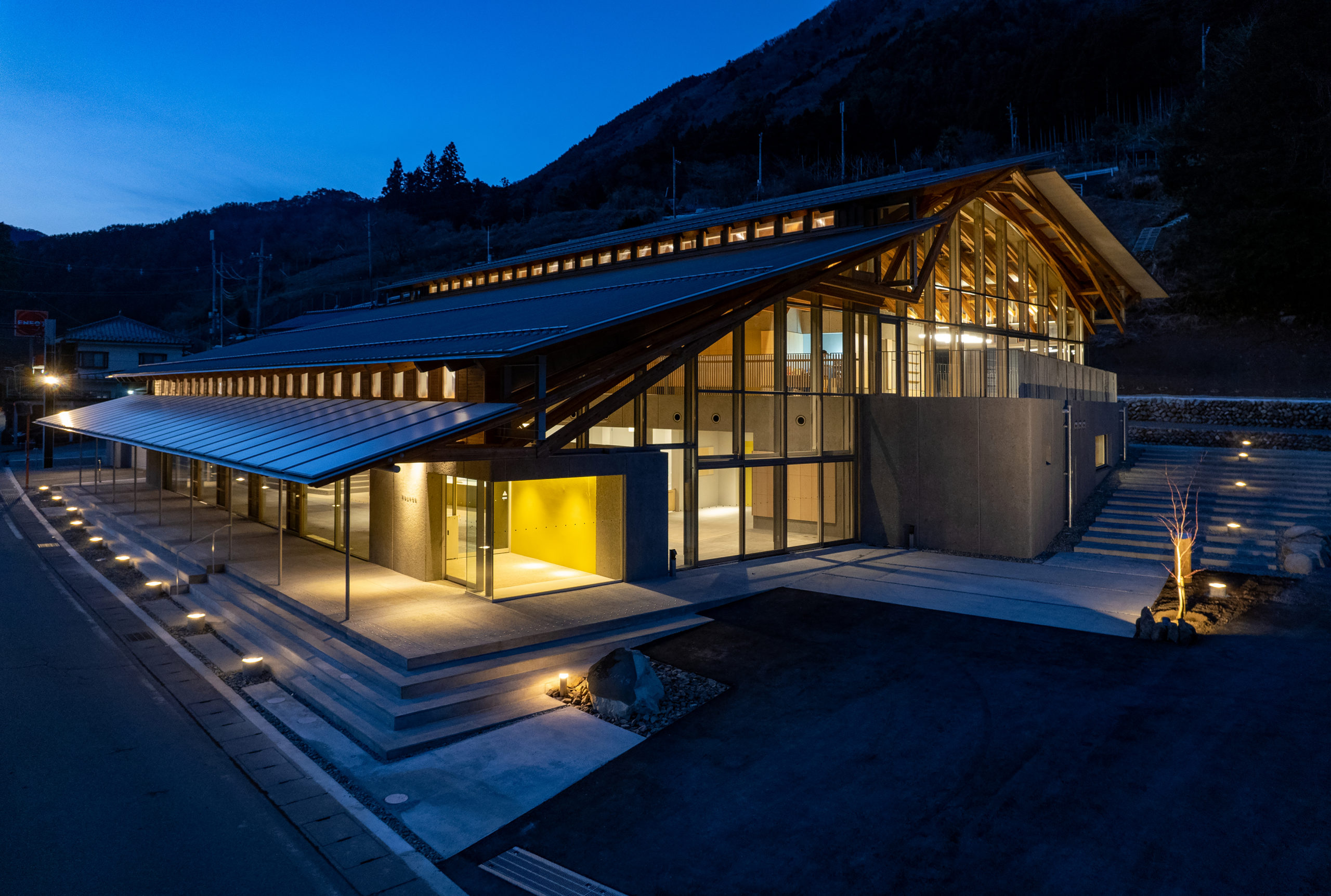
Tambayama Village is located in northeastern Yamanashi Prefecture,
It is a land rich in nature, surrounded by the Tamba River, the headwaters of the Tama River, and rugged mountains such as Mt. Komotori.
Although it is a small village with a population of only 530 people, it has attracted much attention in terms of tourism, including mountain stream fishing, wild game dishes, and a campground with a hot spring.
In 2023, a new government building was completed in Tambayama Village, designed and constructed by Taiyo Kogyo in a JV (joint venture) with NHA (Naoki Hashimoto Architects).
We talked with Takukya Tsuruoka (Tsuruoka) and Mieko Tamegai (Tamegai) about the project.
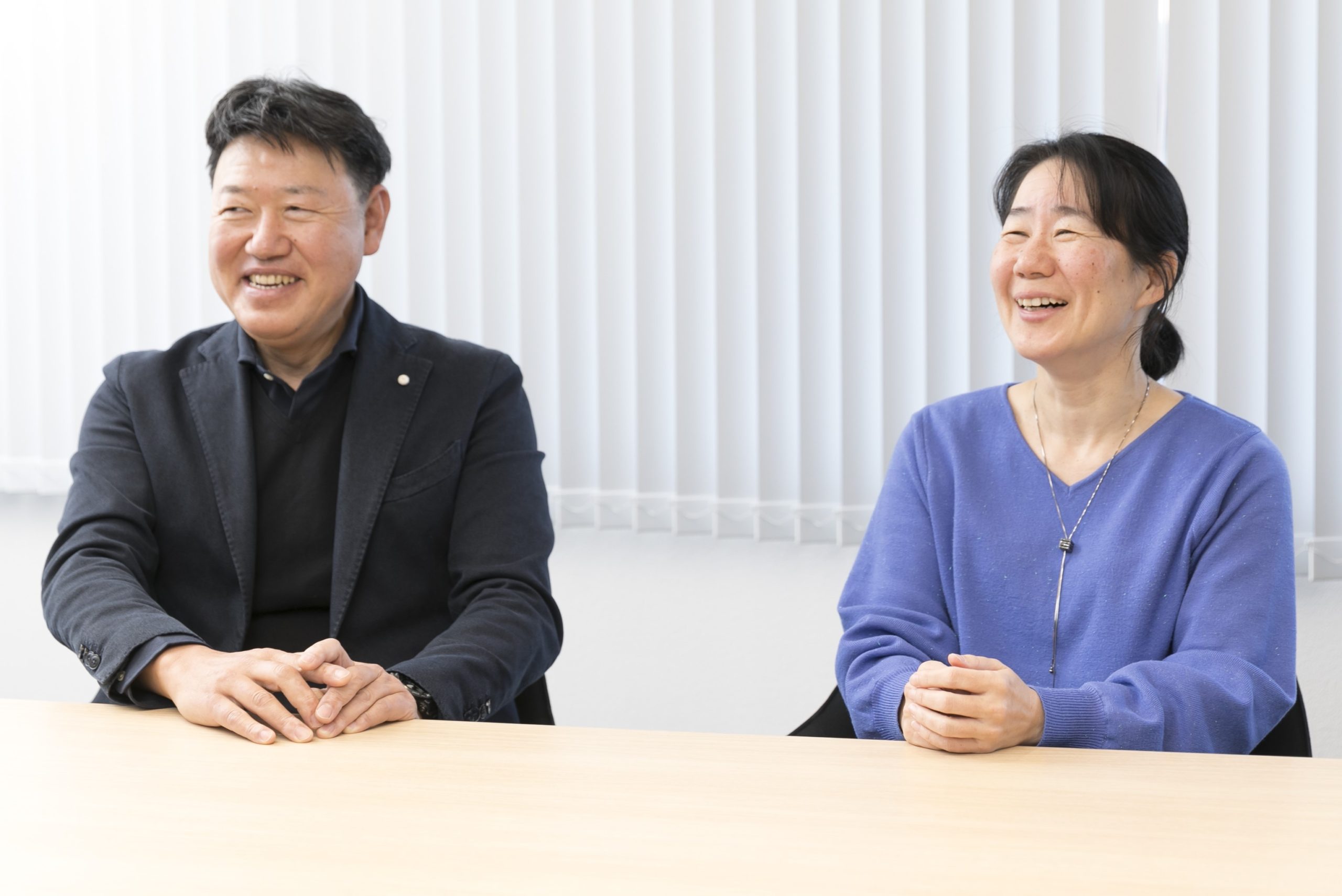
Left: Takuya Tsuruoka
Architectural Technology Planning Department, Architectural Technology Section Joined in 2011
Right: Mieko Tamegai
Architectural Technology Planning Department, Architectural Technology Section Joined in 1995
Taiyo won the project over 9 other companies, due to their landscape design, presentation skills, and a challenging spirit to boldly take on unknown tasks.
The order won over a total of nine competitors, including major general contractors, had a significant impact both internally and externally.
Tsuruoka and Tamegai, who were involved in the presentation, talked about the situation on the eve of receiving the order and starting construction.
Tamegai:
I remember when our team was notified of our participation in this competition in 2020. We wanted to go to the site immediately for a preliminary inspection, but we were asked not to come because of COVID19. Ten companies, including our company, participated in the competition, but one company withdrew during the competition, and it became a competition of nine companies. I thought it would be tough to win with so many competitors, but it was a fascinating opportunity for me to be involved in the entire architectural process, having come from a niche field such as membranes. I was not able to participate in the presentation due to the limited number of people in each team, but I heard that the large perspective drawing made by the design firm that proposed the project with us was very well received. It depicted the new government building with the mountains and nature in the background, and was a wonderful visual representation of the integration of the new building with the environment. I think it also expressed the gentleness of the wooden material. On top of that, Mr. Tsuruoka said, “I will do something that can only be done here!” I think the project was highly evaluated for its high-minded declaration.
Tsuruoka:
As we reviewed the proposals for design and construction, we began to think about how we would go about building it, and at that point I had a feeling that it would be quite difficult. On the other hand, the expectations of the villagers were very high, and since Tambayama Village itself does not often see such large construction projects, I felt that I was at the center of a project that was attracting a lot of attention. The result of the competition was very close, but everyone agreed that our proposal would create a symbolic government building that would serve as a catalyst for local development.
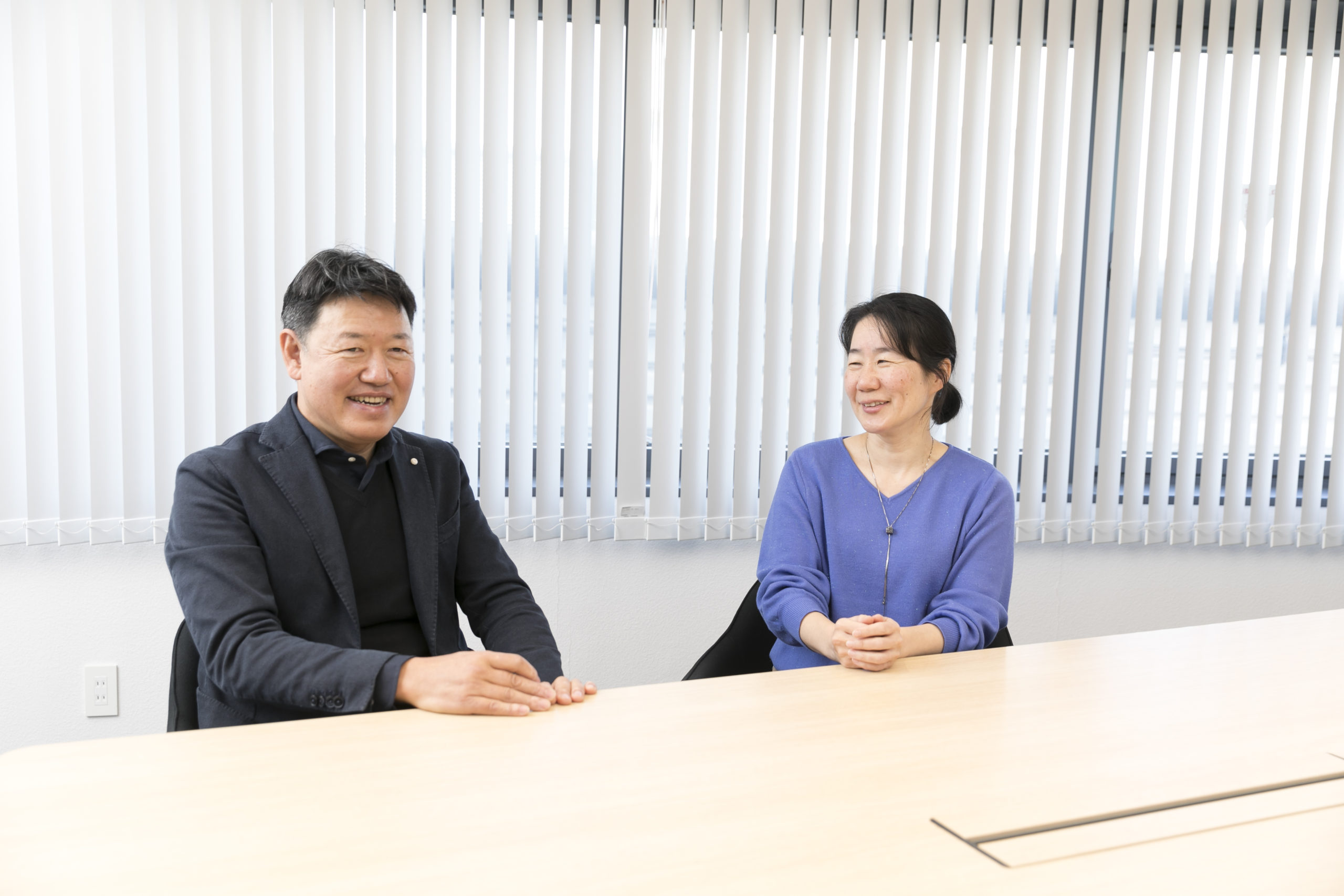
Standing in the way of the early start of construction was the ground improvement works and cement supply challenges.
It was the kindness of the villagers that healed my heart.
The contract was successfully exchanged but the construction scheduled to begin in April 2021, was delayed to September 2021.
This was due to the need for ground improvement, an unforeseen construction project.
Furthermore, the construction site is far from the cement plant.
The unique location of the Tambayama village also weighed heavily on the company.
Tsuruoka:
The original plan was to make a presentation in July 2020, sign a contract in August, finalize design drawings, and start construction in March or April of the following year. However, because the proposed construction site is located on a steep slope, it was decided to drive piles into the middle of the slope behind the site to prevent landslides. This was called deterrent pile work, which was not known at the time of the proposal, so we had to receive a separate order. A civil engineering consultant and a boring survey were conducted at the site to investigate the ground conditions, which delayed the start of construction by about four months. We were also contracted to demolish the private houses that had originally stood on the site of the new government building, all of which were vacant, so we were there for quite some time before construction began.
Tamegai:
There are no hotels in Tambayama Village, and the only accommodations are a few minshuku, or hot spring inns. There are no convenience stores either. There were nine of us from Taiyo Kogyo who stayed at two inns, one for men and one for women. The people at these inns were very kind and treated us like their children and grandchildren. The breakfast and dinner were delicious, lunch was prepared for all of us, and it was very easy to walk to the construction site, which was only a three-minute walk to begin with. The local river fish and gibier were very tasty, and sometimes when we went back to Tokyo, they would bring us freshly harvested vegetables as souvenirs. Mr. Tsuruoka and the others including myself were struggling with the project, but we have all come out of the project having gained weight (laughs). The hot springs have also made my skin glowing.
Tsuruoka:
Speaking of hardships, there was also the issue of distance from the concrete plant. It takes 70 minutes one way over a mountain pass. There were places where even passenger cars could not pass each other, and a 10-ton mixer truck could not hurry to the site. Concrete is a living organism, so it hardens over time and it is very difficult to maintain its quality. There were several instances where we had to work hard to deliver the concrete, only to find that it had hardened so much that we could not pour it and had to return home with a full load, or conversely, we could not use it because the previous pouring work had taken too long. If there was not enough, it was bad, and if there was too much, it was wasteful. We could not just add a little more, so we had a really hard time calculating the quantity and planning the order. I learned the hard way that concrete is difficult to work with in the winter because of the cold weather and dries quickly in the summer, and that I needed to gain more experience in concrete construction.
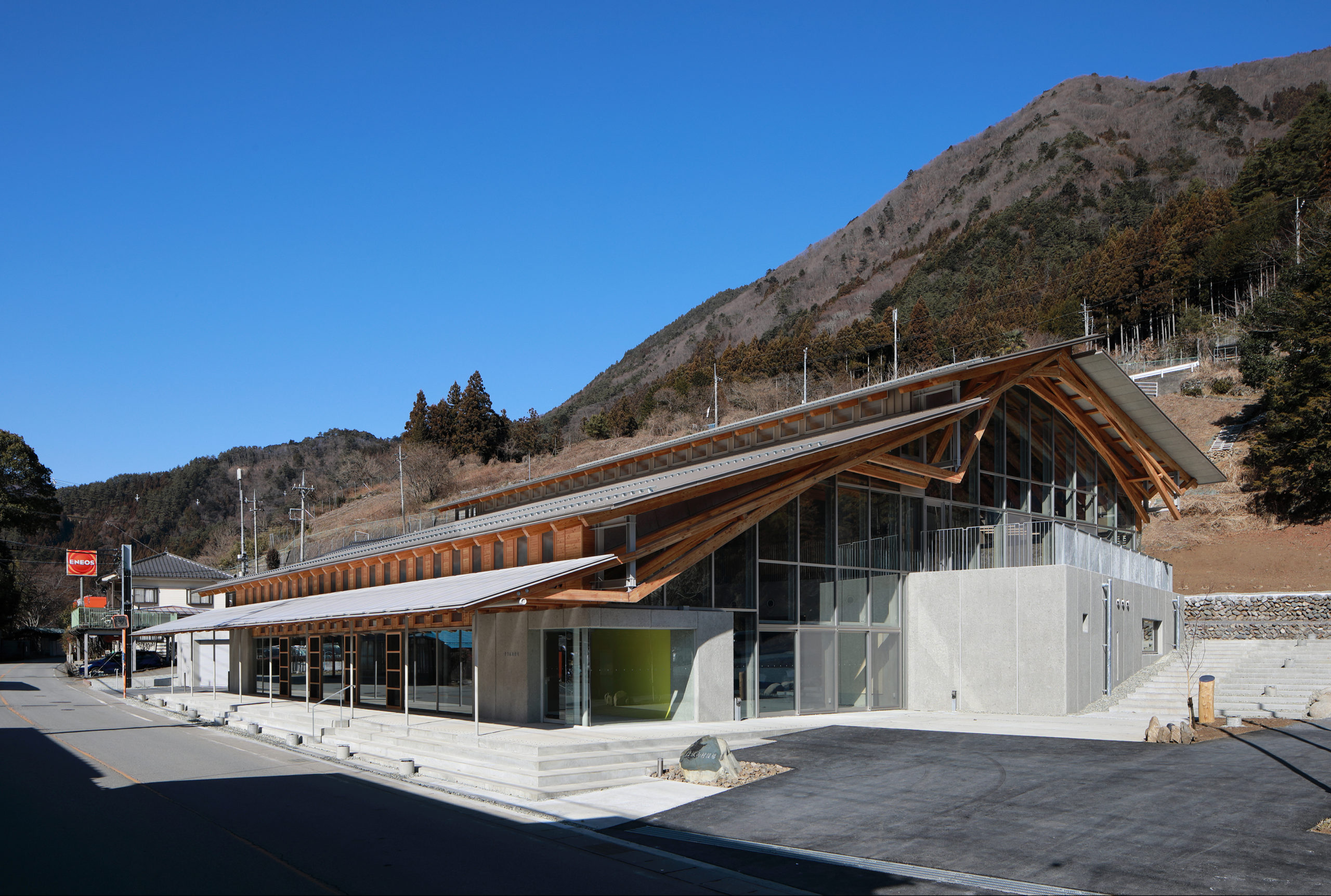
Beams made of laminated wood, and nameplate created from quarrying operations, was the culmination of technology.
With hardship as a springboard, the work proceeds.
They said they could not relax even for a day until the completion of the project.
The most nerve-wracking part was the beam section of the new government building ceiling.
The construction method of using laminated wood taken for the delivery of components requires a high level of technical skill.
Teamwork with proven subcontractors led to success.
Tamegai:
The wooden roof beams are a major highlight of the new Tambayama Village Hall in terms of the harmony between natural materials and people. Normally, a large beam would have been sufficient, but because of the road problem as well as the cement, it was difficult to bring in a very large member. The design office devised a method of combining small laminated timbers with narrow cross-sections. Considering the cost, we arranged to proceed with the work with a minimum number of people, but once the construction actually started, the time and effort required to combine the materials was very difficult.
Tsuruoka:
The roof is made of wooden frames that are connected from one end to the other, one meter at a time, in the shape of a half-dome. If there is an error of even a few millimeters in each span, there will be a large error after the entire span is installed. The curtain wall, a large glass surface, is installed at both ends, requiring a very high level of precision in terms of materials.
The laminated wood beams are made up of three different types of members, and since the individual members are thin, soft, and extremely difficult to maintain accuracy, we began attaching them from a central position where they could be firmly fixed to the concrete frame, and assembled them one by one while controlling the accuracy of the beam core to prevent the beams from meandering.
The problem was how much error would occur where the curtain wall would be attached as it was assembled toward the ends, but as a result, all the beams were able to be assembled to the required accuracy.
We had many detailed discussions with the subcontractor in charge of laminated wood, from installation errors between the drawings and the members to expansion errors due to high summer temperatures. As a result, all the beams were kept within acceptable tolerances. Work proceeded smoothly, and we are very pleased with the results.
The subcontractor in charge of laminated wood had a great deal of experience in this type of construction, and all the numbers that we said we would use were able to be accommodated as they were.
This subcontractor had a great deal of experience in construction, and I am very grateful to them because all of the numbers that we said we would use were able to be accommodated as they were.
Tamegai:
Although not a partner company that we deal with on a daily basis, they were involved in another type of construction work at the Shin Toyosu Brillia Running Stadium site, where we are currently working on the relocation from Toyosu. Through this relationship, when we told them that the project was going to be a bit difficult, they were very accommodating from the early stages and provided us with consultation, for which we are truly grateful.
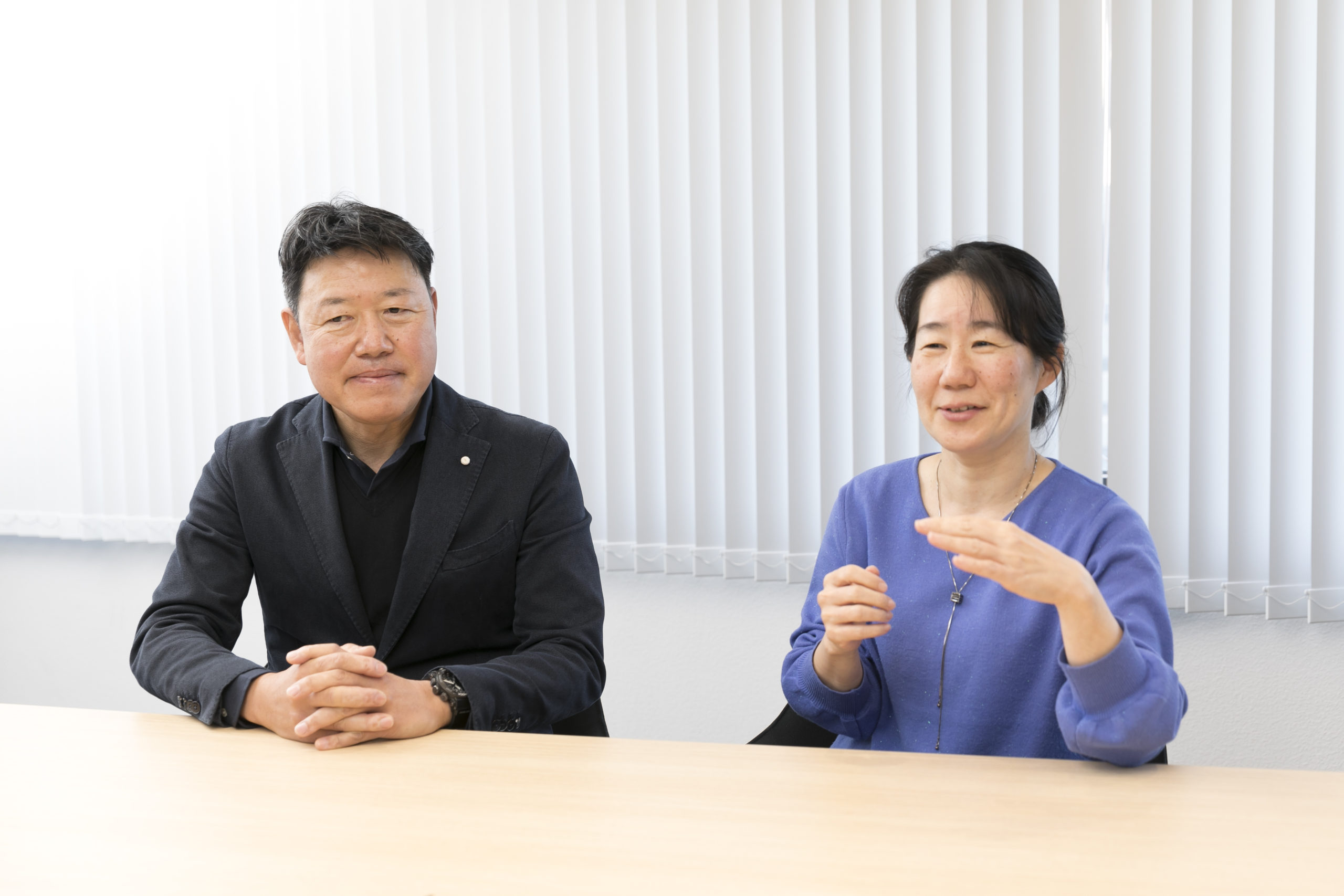
Tambayama Village is rich in nature, surrounded by steep mountains.
To create a new government building that integrates with the environment and is disaster-resistant.
While utilizing concrete, the unique gentleness of wood was expressed; another testament to the natural beauty of Tambayama Village.
Tsuruoka:
Tambayama Village also had to deal with underground obstructions: as soon as construction began in September, a tremendous amount of rocks came out of the ground. As soon as construction began in September, an unbelievable amount of rocks came out of the ground, including table-sized boulders more than 1 meter in diameter. This was truly unexpected, but we had to remove all the stones before we could proceed with the columnar improvement work, so it took nearly three months to remove the underground obstacles. Moreover, after the work was completed, approximately 2,000 tons of removed stones were left behind. Since the disposal of the stones would cost even more, we had to rent a crusher to crush the stones into smaller pieces on site, and for about two months the construction site was transformed into a crushing plant.
Tamegai:
There is a later story about the crushed stones. The crushed stones were used as exterior finishing materials, and one of them was neatly cut and made into a nameplate with the inscription “Tambayama Village Hall” on it. The stone has a black stain on its cross section, which they say resembles a birthmark on the face of Sumijiro, the main character in the popular anime “Kimetsu no Yaiba” (Demon Slayer), which is set in Tambayama Village. The owner and all the staff were excited about the “Sumijiro stone,” and the unique font used in “Demon Slayer” was also used for the nameplate. We hope that fans will come and check it out.
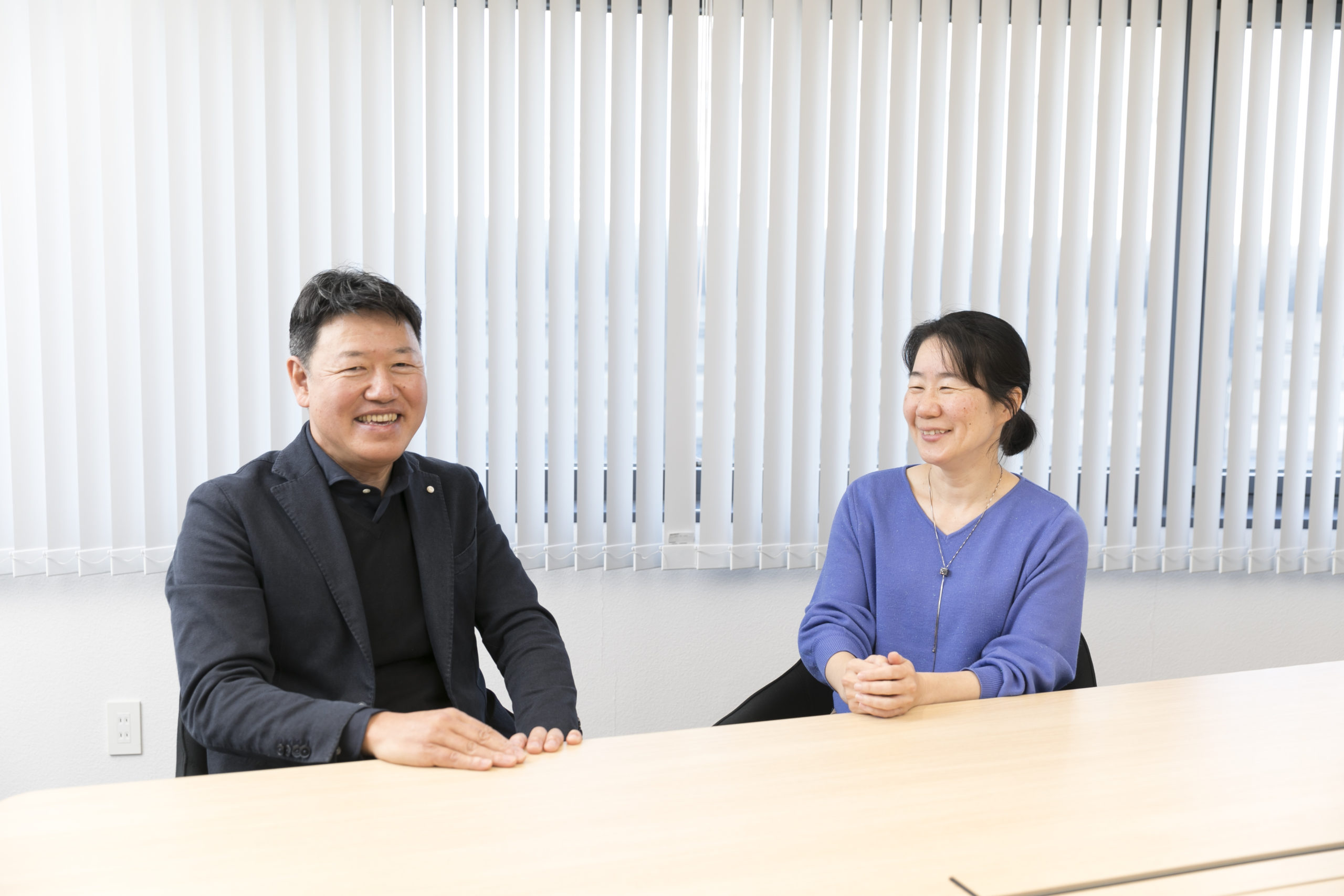
The building was awarded the "Yamanashi Prefecture Architectural Culture Award".
Fulfillment in the qork of carrying on history as reflected in the traditional "Omatsuhiki" event.
A grand inauguration ceremony was held on March 25, 2023. The facility was put into service in April of that year.
The new government building, which will create the future of Tambayama Village together with the villagers, won the prestigious “Yamanashi Prefecture Architectural Culture Award”. In January 2024, Tsuruoka visited the new government building again.
Tsuruoka:
In January 2023, just prior to the handover of the new government building, a traditional Tambayama village event called “Omatsuhiki,” which had been postponed for several years due to COVID, was held. The “Omatsuhiki” is a lively festival with a history of more than 300 years, in which people parade through the village while singing and playing taiko drums and musical instruments. I also went to see the festival in January 2024, when the new government building was completed and put into service. I mentioned the large perspective that made an impact during the proposal process, and the bustling street scene centered on the new town hall is a true depiction of the Omatsubiki scene.
On the way to the goal, a grand mochi-making ceremony is held in front of the government office building. The new town hall has a shed and a concrete section facing the street, which we call the “Mochimaki Terrace,” and as I chased after the rice cakes and oranges thrown from the terrace, I thought to myself, “This is what the terrace was for. Imagining the excitement of the people of the village for decades and generations to come as they chased the rice cakes thrown from the terrace we had built, I felt an even greater sense of accomplishment in participating in a part of history and in building the future.
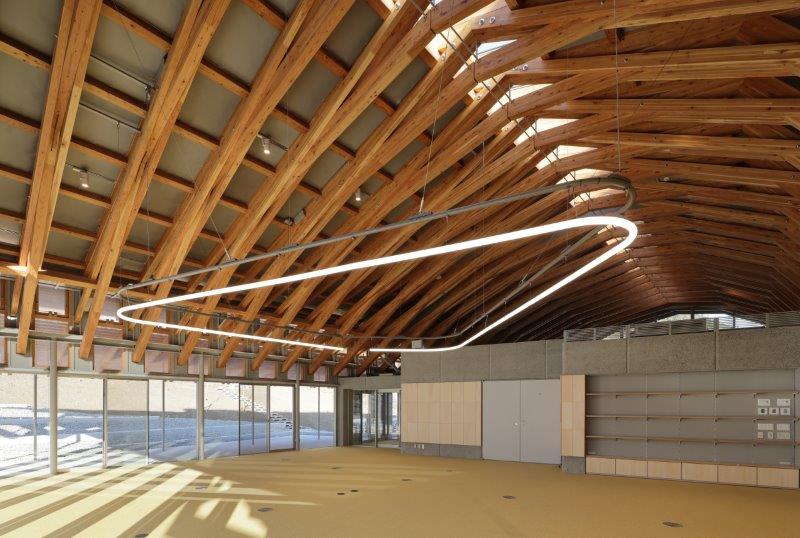
Looking back on the inauguration ceremony, Tsuruoka, who was deeply moved by his role as a part of history, emphasized that the project was the result of the combined efforts of many people, transcending the boundaries of politics, business, government, and the private sector. Tamekai then expressed her gratitude both internally and externally, as well as her will to preserve the company’s corporate culture.
Tsuruoka:
The inauguration ceremony was also a great success, with the village hall staff, members of the village assembly, and members of the Diet all coming to congratulate the new building. Two members of the Diet came to the ceremony, both of whom were elected by the local community and have been watching over the new government building since it was under construction. One was Ms. Akiko Horiuchi, who served as Vice Minister of the Ministry of the Environment, and who has maintained a close relationship with the town hall and helped us obtain Nearly ZEB certification subsidized by the Ministry of the Environment. There was also a person who served as a vice minister of the Cabinet Office. I was reminded of the magnitude of the project, which was completed through the cooperation of the political, business, government, and private sectors.
We were encouraged by the Yamanashi prefectural government to enter the “Yamanashi Prefecture Architectural Culture Award,” and we received the “Architectural Culture Award,” the top prize. We attended the award ceremony together with Ms. Tamegai, the person in charge of the town office, and the design firm. We were of course honored and happy, but the people of the town office were also very pleased, and we will never forget the hard work we shared with them.
Tamegai:
In this project, I am grateful not only to the people of Tambayama Village and everyone involved in the construction work, but I also strongly felt the greatness of Taiyo Kogyo as a company. I am grateful to the upper management for deciding to take on the challenge of a competition in which there were many competitors with little track record, and for better or worse, I felt that all of the employees who provided logistical support for us, who were insensitive and not sufficiently communicative, were very reliable. When we introduced a rainwater infiltration facility, a product of the Civil Engineering Department, we were helped a great deal by those who rushed to our aid with a shovel. Unity in the field is the traditional corporate culture of Taiyo Kogyo, and I would like to continue to cherish it in the future.
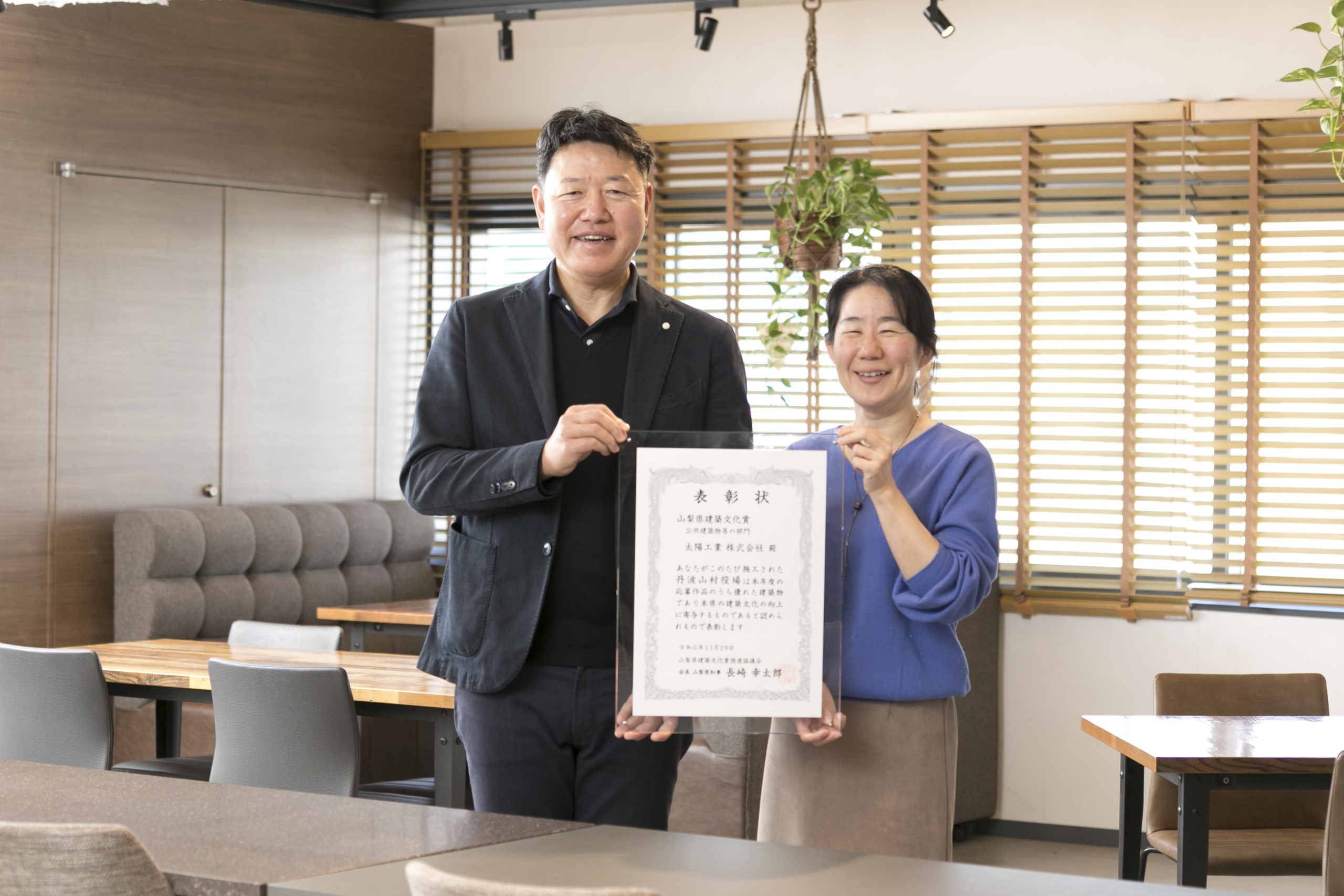
Despite the many challenges they faced, including fierce competition, ground improvement, difficult cement transportation, underground obstructions, and crushed stone disposal, Tsuruoka and Tamegai had smiles on their faces from beginning to end. Their smiles were brought about by nostalgia for the time they spent with the villagers in Tambayama Village and a sense of fulfillment from being part of the history of a strange land.
Even today, somewhere in Japan, many Taiyo Kogyo staff members are working hard, drawing on their wisdom, and at times struggling to create a new history together with the local residents.
Related Articles
- TOP>
- Taiyo Kogyo Column>
- Received the prime contract for the new Tambayama Village Hall, creating a new history with the locals by overcoming mountain passes and huge stone.






